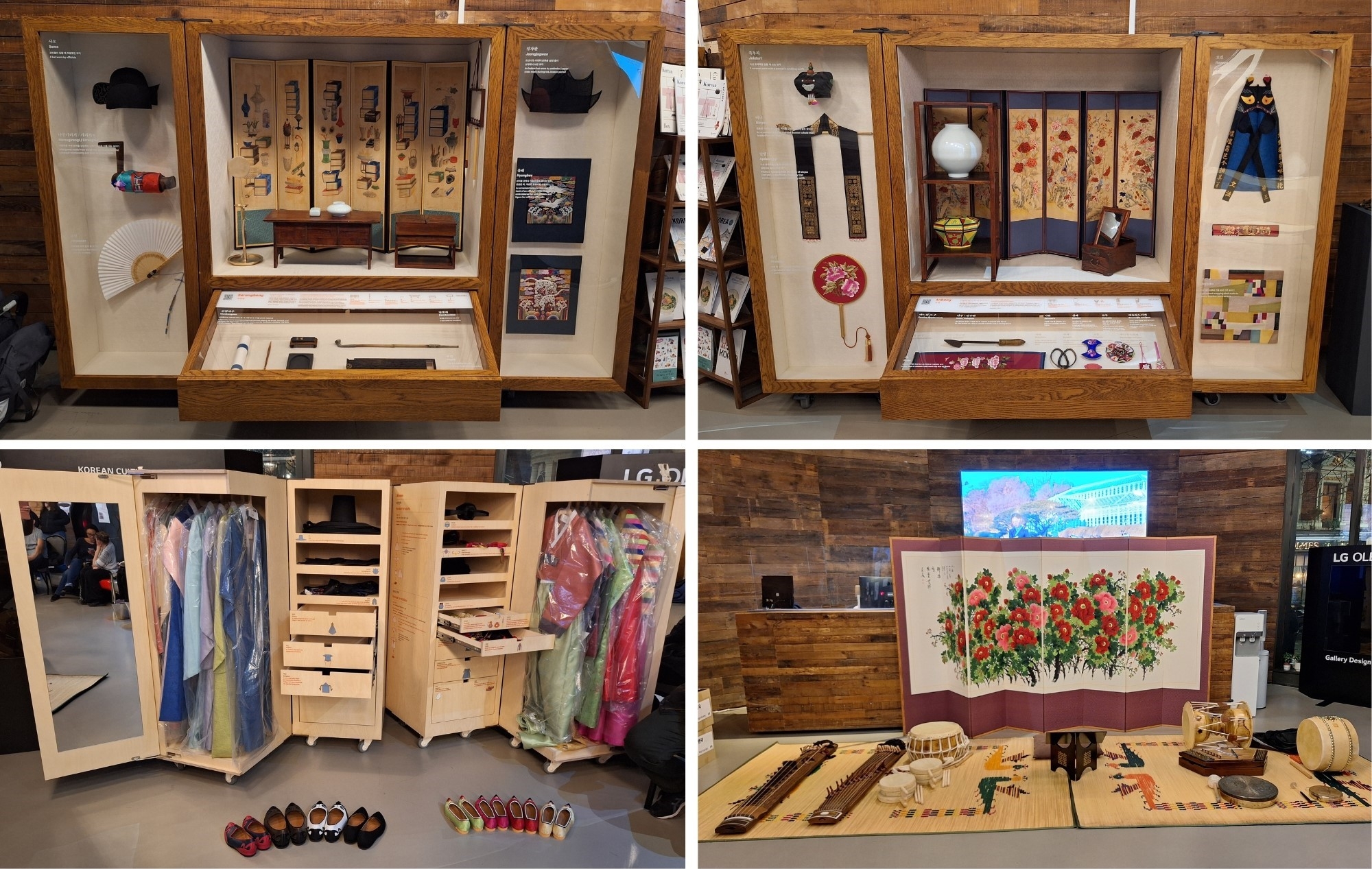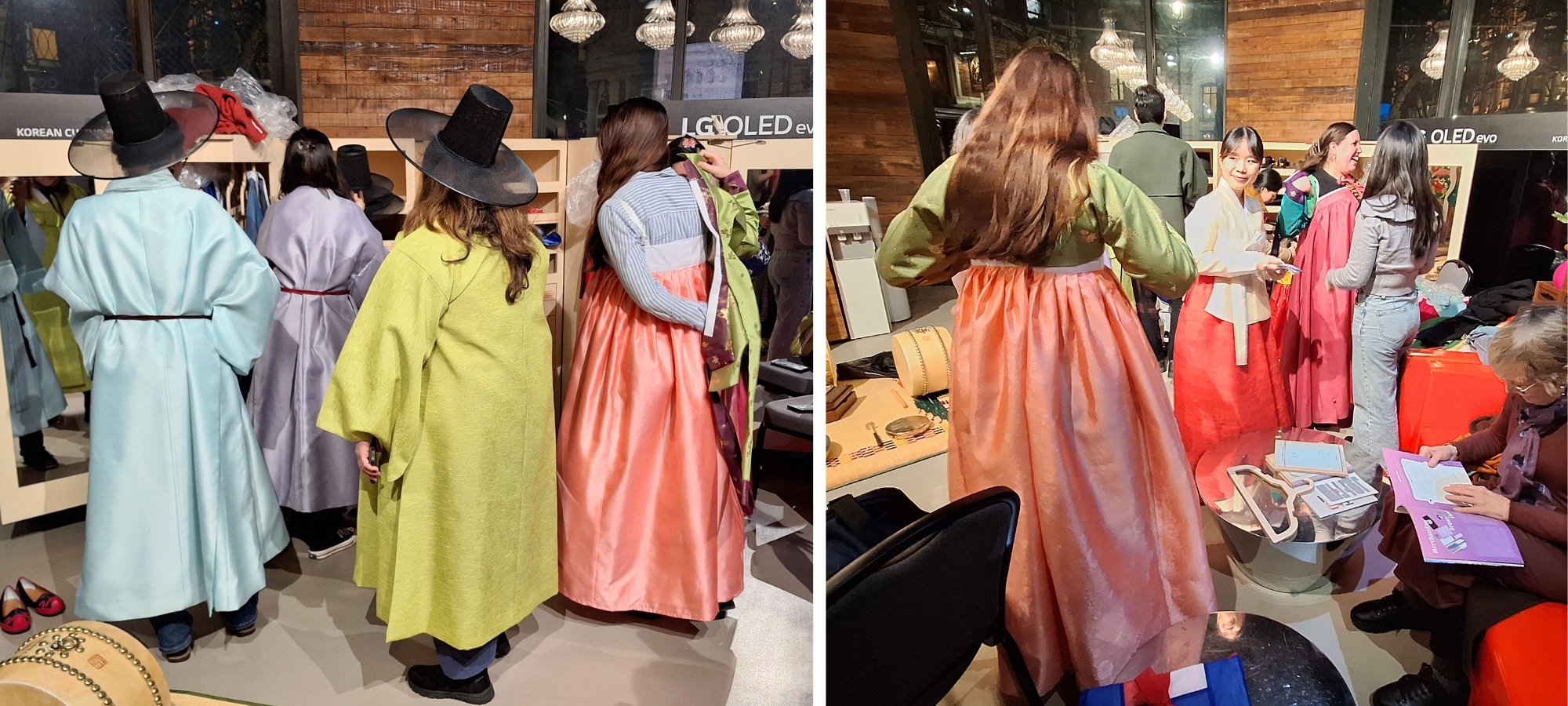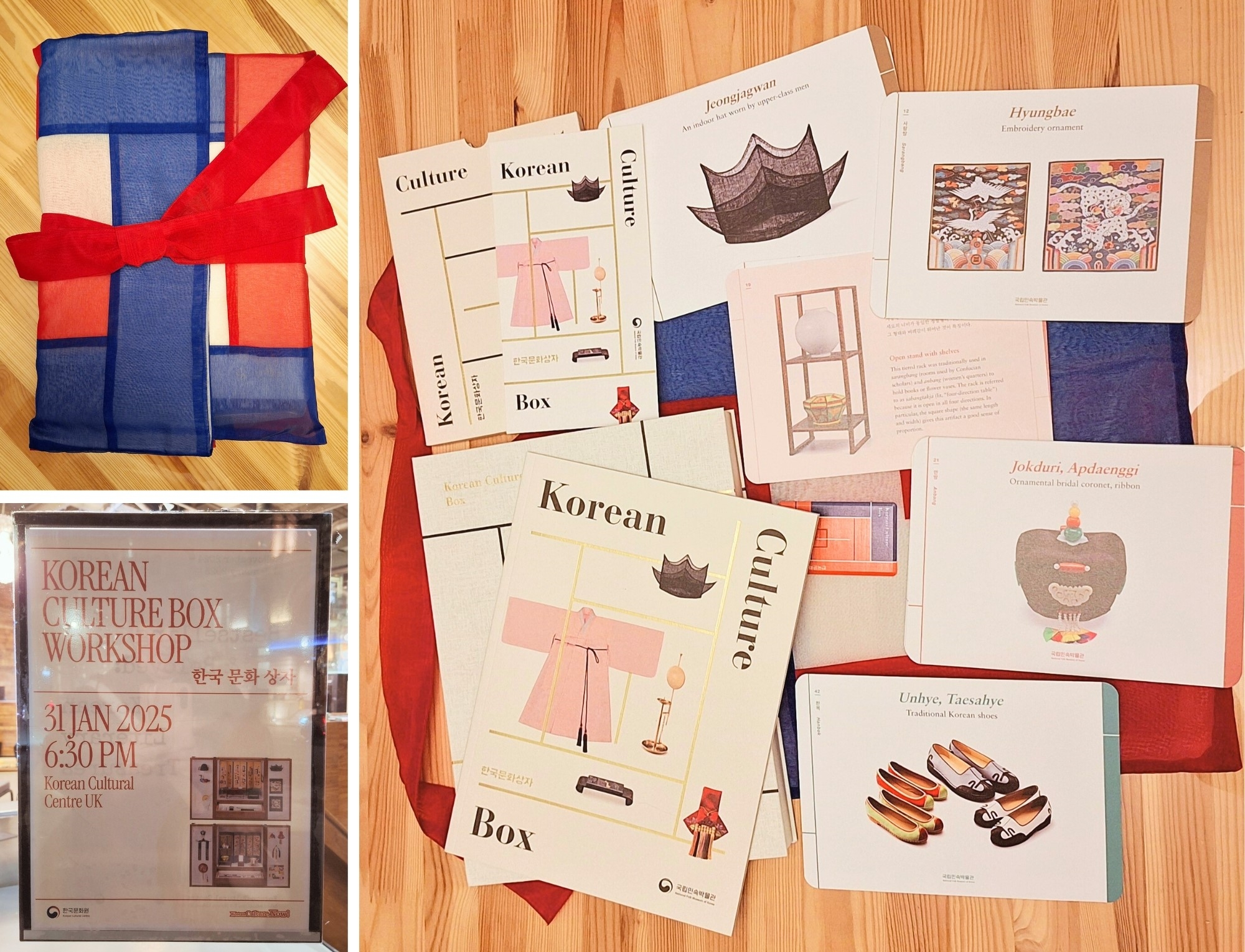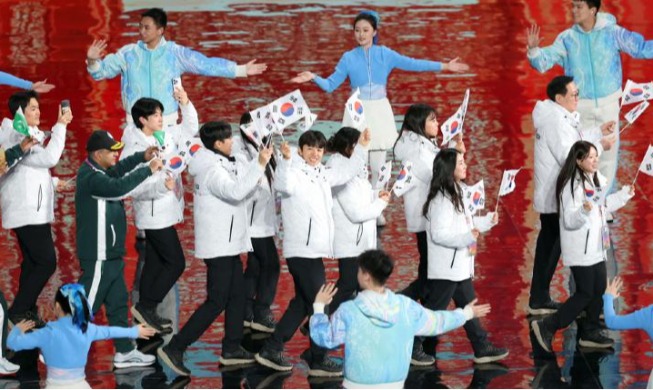- 한국어
- English
- 日本語
- 中文
- العربية
- Español
- Français
- Deutsch
- Pусский
- Tiếng Việt
- Indonesian
By Honorary Reporter Marianna Szucs from Hungary
Photos = Marianna Szucs
The Korean Cultural Center in London on Jan. 31 held a workshop on Korean culture boxes to mark Seollal (Lunar New Year), with the four displays featuring a sarangbang (guest reception room), anbang (women's quarters), Hanbok (traditional clothing) and traditional instruments.

Clockwise from top left are the exhibition boxes displaying a sarangbang (guest reception room), anbang (women's quarters), Hanbok (traditional clothing) for trying on and traditional musical instruments.
The second featured the anbang, a women's quarters in the innermost part of a home and protected from any uninvited views. The most exciting items were the iron and ironing board that Joseon women used.

Trying on Hanbok
The next event was an introduction to traditional musical instruments: the janggu (hourglass-shaped drum); sogo (small handheld drum); buk (barrel-shaped drum); geomungo (plucked zither with bridges and frets); gayageum (12-string zither); kkwaenggwari (small flat gong); and jing (large gong). Each instrument was briefly explained and the host of the evening also showed how to play them.

These materials explaining each exhibit went to each visitor at the end of the workshop.
Ending the event was a gift given to each visitor: a beautiful publication on the event wrapped in bojagi (traditional wrapping cloth).
msjeon22@korea.kr
*This article is written by a Korea.net Honorary Reporter. Our group of Honorary Reporters are from all around the world, and they share with Korea.net their love and passion for all things Korean.
Most popular
- Is archive and document restoration the next big thing in Hallyu?
- Stricter rules for battery packs on flights coming next month
- 'Parasite' director returns with humanistic sci-fi film 'Mickey 17'
- aespa, BLACKPINK's Jennie win Billboard Women in Music Awards
- US critics name 'Squid Game' S2 best foreign language series
